Agricultural Literacy Curriculum Matrix
Lesson Plan
FoodMASTER: Fats and Oils
Grade Level
Purpose
Students identify the farm source of common dietary fats, compare Nutrition Facts labels, perform a taste test of various salad dressings, learn the chemistry of emulsification, and compare regular ice cream, reduced-fat ice cream and fat-free ice cream. Grades 3-5
Estimated Time
Materials Needed
Activity 1: Dress it Up
- For the teacher: 3 tablespoons, 16-fluid ounce bottle of ranch salad dressing, 16-fluid ounce bottle of light ranch salad dressing, 16-fluid ounce bottle of fat-free ranch salad dressing.
- For each student: 1 plate, food labels for each salad dressing, several raw vegetable pieces (carrots, celery, broccoli), 1 tablespoon ranch dressing, 1 tablespoon light ranch dressing, 1 tablespoon fat-free ranch dressing.
- Dress it Up student handout
- Scientific Inquiry: Reading Labels student handout
- Teacher Answer Key
Activity 2: Emulsify This
- For the teacher: Masking tape, permanent marker.
- For each group: 1 liquid measuring cup, 2 glass jars with lids*, set measuring spoons, colored pencils, 1/2 cup vinegar, 1/2 cup cooking oil, 1 teaspoon dry mustard, 1 teaspoon paprika.
- *Jars may be 1/2 pint size or larger.
- Emulsify This student handout
- Scientific Inquiry: Immiscible student handout
- Teacher Answer Key
Activity 3: Mmmm Creamy
- For the teacher: Ice cream scoop, 1/2 gallon regular ice cream, 1/2 gallon reduced fat ice cream, 1/2 gallon fat-free ice cream.
- Be sure all three ice creams are the same flavor.
- For each student: 3 small cups, 1 spoon, food labels for each ice cream, pen or marker.
- Mmmm Creamy student handout
- Scientific Inquiry: We All Scream for Ice Cream student handout
- Teacher Answer Key
Elaborate
Vocabulary
emulsifier: a substance that keeps two immiscible liquids from separating
immiscible: two liquids that won’t mix (they naturally separate)
interface: the line between two layers of liquids that don’t mix
mouth feel: the way food feels in your mouth due to temperature, creaminess, dryness or moisture
saturated fat: a type of fat containing a high proportion of fatty acid molecules without double bonds, considered to be less healthy in the diet than unsaturated fat
trans fats: man-made solid unhealthy fats
unsaturated fat: a type of fat containing a high proportion of fatty acid molecules with at least one double bond; considered to be healthier in the diet than saturated fat
Background Agricultural Connections
Introduction to FoodMASTER:
FoodMASTER (Food, Mathematics and Science Teaching Enhancement Resource) is a compilation of programs aimed at using food as a tool to teach mathematics and science. It is our theory that if food is used as a tool to teach mathematics and science, students will be better prepared to demonstrate and apply mathematic and scientific knowledge. Because students encounter food on a daily basis, they have preexisting contextual experiences preparing them for learning new and relevant mathematics and science material.
Food is conducive to hands-on and virtual, inquiry-based, active learning that uses multiple senses to engage students in the learning process. Utilizing food allows for an interdisciplinary approach to learning concepts and ideas in a variety of scientific subjects like general science, biology, chemistry, microbiology, nutrition and health. Additionally, food labs are a dynamic way to teach mathematics concepts such as numbers and operations, algebra, geometry, measurement and problem solving.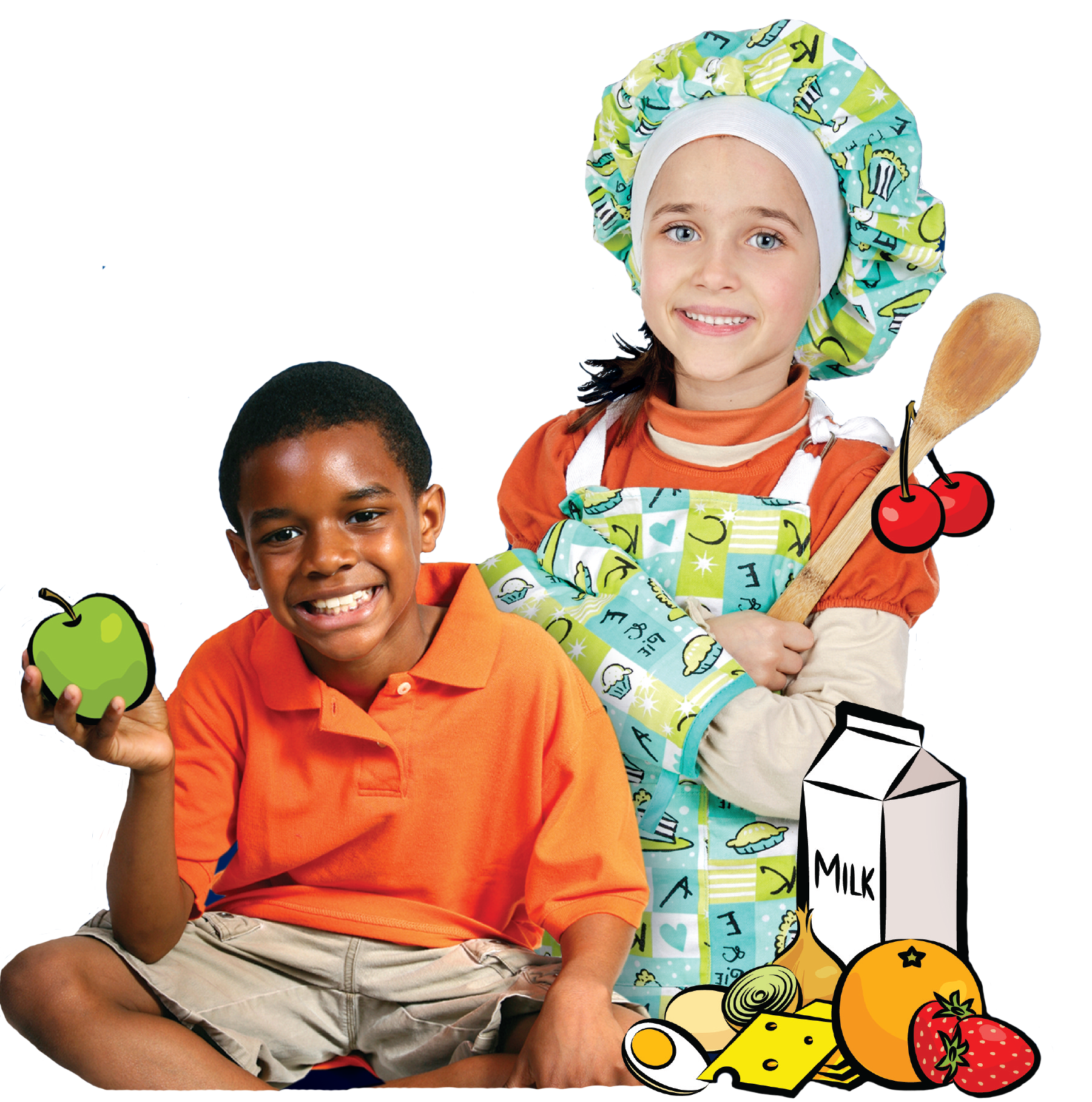
The knowledge and skill development that can be inspired by the FoodMASTER approach is limitless. Proper use of measurement tools, data collection and interpretation, application and generalization, classification and organization, graphing and comparative analysis, understanding chemical changes, observing functions of ingredients and controlling variables, pricing, critical thinking, self-directing learning, and team building are only a few of the potential knowledge and skill development areas for intermediate grade students experiencing FoodMASTER’s scientific inquiry labs.
Additional FoodMASTER lessons can be found to cover health and nutrition topics such as:
- Food Safety
- Vegetables
- Fruits
- Meat, Poultry, and Fish
- Eggs
- Fats and Oils
- Grains
- Measurement
- Meal Management
Background for this Lesson:
Fat is a nutrient found in foods. The body uses fat for energy, growth and nerve and brain functions. Everyone needs some fat in their diet. However, many Americans eat too much fat. Fats are high in calories and the wrong kinds of fat can be unhealthy. For this reason, it is important to learn which fats are healthier and which are less healthy.
In this lesson, students will:
- locate serving sizes, calories, grams of total fat, grams of saturated fat and grams of trans fat on food labels;
- use correct unit labels;
- record data in a table and practice multiplication skills by calculating the number of calories from fat in each type of salad dressing;
- explain why one salad dressing is healthier than another;
- use new vocabulary such as immiscible and emulsify; and
- practice measurement skills and perform an experiment and make reasonable conclusions.
- locate serving sizes, calories and grams of total fat on food labels
- record data in a table, use correct unit labels and complete a bar graph; and
- be able to discuss mouth feel.
Engage
- Ask your students, "What is fat?" "Is fat necessary in our diet?" Inform students that everyone needs some fat in their diets. It's true that many Americans eat too much fat, which can be unhealthy. However, some fats and fat in moderation is a healthy part of our diet.
- Make a list of the following foods on your board:
- Hamburger
- Tomatoes
- Ham
- Vegetable Oil
- Wheat
- Corn
- Ask a volunteer to circle all of the food items that begin its production on a farm. Ask another volunteer to identify where each food item originates. (Hamburger is meat from cattle, ham is meat from pigs, and wheat, corn, and tomatoes are all plants grown by farmers for us to eat.) Likely, students will not know that oil is also produced by a farmer.
- Explain to students that the seeds of many plants contain oil. A farmer grows the plant, harvests the seeds, and then presses the seeds to extract the oil. Some of the plants grown for their oil include: corn, safflower, canola, cottonseed, sunflower, or soybeans.
- If needed, help your students understand that the oil used when making a cake or brownies and the oil their parents cook with is the type of oil extracted from seeds.
Explore and Explain
Activity 1: Dress it Up
Scientific Inquiry: Reading Labels
- Read Dress it Up and complete the Doodle Bugs.
- Review label reading. Explain that the Nutrition Facts on food labels tell you how many calories, grams of total fat, grams of saturated fat and grams of trans fat are in foods. Sometimes grams of monounsaturated and polyunsaturated fats are listed too. Show the class where to find serving sizes, total calories, total fat, saturated fat and trans fat on the Nutrition Facts label. Point out the different units of measurement such as tablespoons, calories and grams.
- Give each student or pair of students a set of food labels. Instruct your students to complete the Salad Dressing Nutrition Facts table. Remind students to record units of measurement.
- Students may work independently, in pairs or as a class to complete questions one to six.
- Place several vegetables and one tablespoon of each salad dressing on each student’s plate.
-
Students will dip vegetables into the salad dressing to complete a taste test. Instruct students to answer the remaining questions.
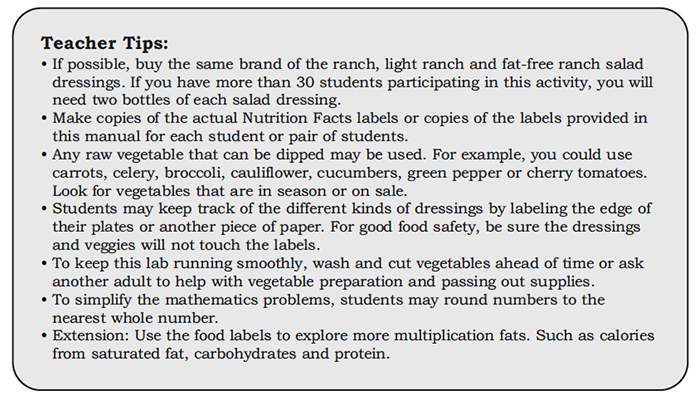

Activity 2: Emulsify This
Scientific Inquiry: Immiscible
- Prior to beginning the activity, label the jars using small strips of masking tape and a permanent marker. Each group will need a jar labeled “A” and a jar labeled “B”.
- Read Emulsify This and complete Doodle Bugs.
- Separate the class into groups of four to eight students.
- Review the new vocabulary words: immiscible (liquids that normally don’t mix), emulsify (to blend), emulsifier (a substance that keeps two immiscible liquids from separating), interface (the line between two layers of liquids that don’t mix).
- Students will follow the Scientific Inquiry: Immiscible instructions to complete the lab.
- Students will take turns measuring the ingredients and shaking the jars.
- While observing the separation of the vinegar and oil, the class may discuss other kitchen emulsions such as mayonnaise, salad dressing, peanut butter and milk.
- After several minutes of observation, instruct students to complete the questions.
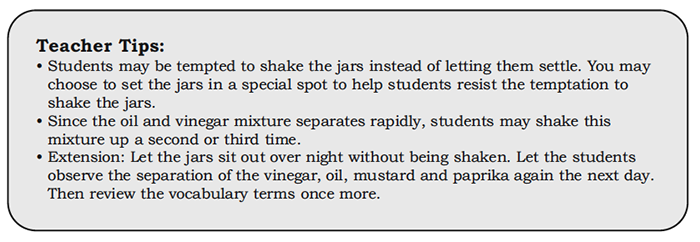
Activity 3: Mmmm Creamy
Scientific Inquiry: We All Scream for Ice Cream
- Read Mmmm Creamy and complete the Doodle Bugs.
- Pass out the Nutrition Facts labels for each ice cream to each student or pair of students.
- Review where to find serving sizes, calories and total fat on the Nutrition Facts labels.
- Then instruct students to complete the Ice Cream Nutrition Facts table. Remind students to record the units of measurement.
- Once students have completed the table, they will use the data to complete the bar graph.
- Finally, serve each student a small sample of each type of ice cream in their small cups. Ask students to label their cups “R” for regular, “RF” for reduced fat and “FF” for fat-free.
- Students will taste the ice cream and complete the Ice Cream Taste Test Facts table. Encourage students to use descriptive words when completing the chart.
- Students will finish the lab by answering questions one to three.
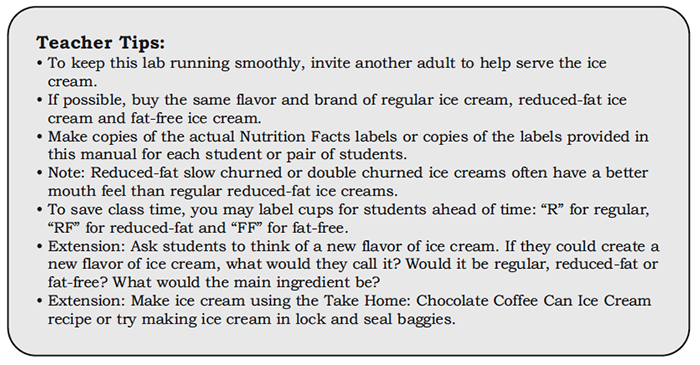
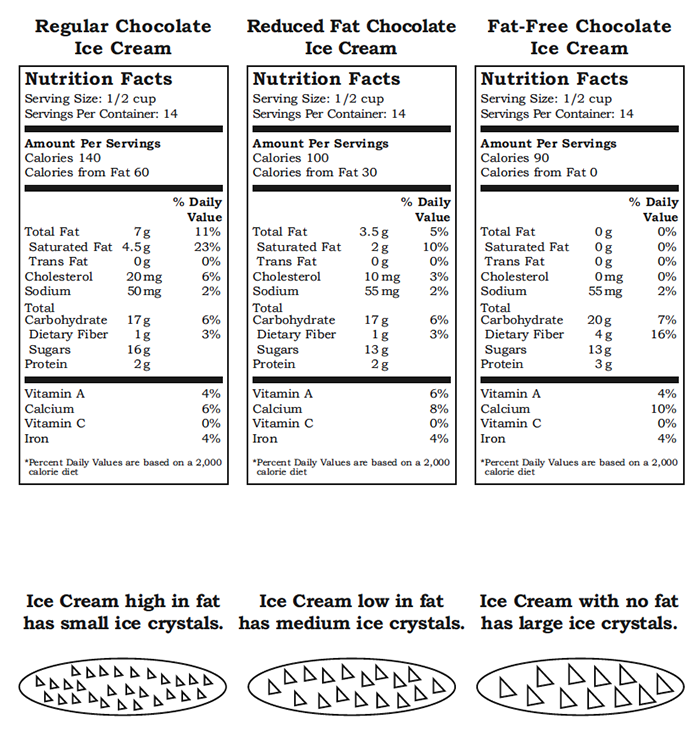
Elaborate
Got Butter: Complete the math enrichment activity. Students will learn about the emulsion of milk fat and water and the change that takes place to make butter.
Evaluate
After conducting these activities, review and summarize the following key concepts
- Fats and oils are found in various forms in the food we eat.
- Oil, used in cooking, is produced from seeds and plants that were grown by farmers.
- Fats and oils should be consumed sparingly.
Acknowledgements
- Created by: FoodMASTER (Food, Math, and Science Teaching Enhancement Resource)
- Sponsored by: SEPA (Science Education Partnership Award)
- Partnered with: Ohio University and East Carolina University
- Graphics provided by FoodMASTER
Recommended Companion Resources
- A Pocketful of Goobers
- Eat Happy Project Video Series
- Food Group Puzzle
- From Peanut to Peanut Butter
- Higher or Lower: Ingredient Investigation
- Ice Cream Everywhere: Sweet Stories from Around the World
- Ice Cream Man: How Augustus Jackson Made a Sweet Treat Better
- Ice Cream in a Bag
- Ice Cream: The Full Scoop
- Let's Make Butter
- Look Inside Food
- Oilseeds Flowchart
- The Science of Cooking
Author
Organization
| We welcome your feedback! If you have a question about this lesson or would like to report a broken link, please send us an email at [email protected]. If you have used this lesson and are willing to share your experience, we will provide you with a coupon code for 10% off your next purchase at AgClassroomStore. |
